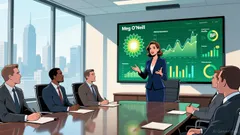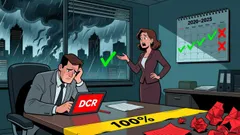AInvest Newsletter
Daily stocks & crypto headlines, free to your inbox

The Federal Reserve’s internal debate between inflation-hawkish and labor-market-dovish factions has never been more consequential. As the Fed’s voting members rotate and economic crosscurrents intensify, investors must decode the signals from central bankers to position portfolios for a landscape of slowing growth and persistent price pressures. Here’s what the divide means for markets—and why it matters now more than ever.
The Fed’s policy stance is increasingly shaped by its rotating membership. In 2025, two new regional Fed presidents—St. Louis’ Alberto Musalem and Kansas City’s Jeffrey Schmid—have brought a hawkish tilt to the voting committee. Both emphasize patience on rate cuts, fearing premature easing could reignite inflation. Their stance contrasts with Austan Goolsbee (Chicago Fed), a dovish voice advocating deeper cuts to support the labor market.
The core disagreement? Inflation risks versus growth concerns. Hawks point to stubborn core PCE inflation at 2.8% (still above the 2% target) and the threat of rising tariffs, which could push prices higher. Doves, however, highlight a labor market “broadly in balance” with unemployment at 4.2%, arguing that overly restrictive policy risks stifling job creation.
The Fed’s
hinges on three critical metrics:Investors face a dilemma:
- Equities: Dovish signals (e.g., rate cuts) could lift risk assets, but hawkish persistence risks a “taper tantrum”-style correction.
- Bonds: The 10-year Treasury yield has swung between 4.2% and 4.8%, reflecting Fed uncertainty. A 4.5% yield now represents a key battleground.
- Currencies: A Fed that resists cutting rates faster than other central banks could buoy the dollar.
The Fed’s 2025 policy path is a tightrope between two risks:
1. Hawkish Overreach: Premature tightening could tip the economy into a shallow recession, hurting cyclical stocks.
2. Dovish Underreaction: Delayed rate cuts might allow inflation to resurge, spiking bond yields and penalizing equities.
Actionable Takeaways:
- Stay Defensive: Favor sectors insulated from inflation (e.g., utilities, consumer staples) if hawkishness prevails.
- Monitor Tariffs: Trade policy shifts could trigger volatility; track tariff announcements alongside inflation data.
- Embrace Flexibility: Maintain a mix of duration hedges (Treasuries) and growth exposure (tech, industrials) to navigate Fed crosscurrents.
The Fed’s 2025 policy calculus is a high-stakes balancing act. With hawks like Musalem and Schmid now influencing decisions, the path to rate cuts is narrower than markets currently assume. Dovish hopes for aggressive easing (pricing in over four rate cuts) may clash with inflation realities, leading to disappointment.
Investors should anchor positions to data milestones: a sustained drop in core PCE below 2.5% or a meaningful rise in unemployment could tip the scales toward dovish easing. Until then, prepare for volatility—this Fed’s crosscurrents won’t calm anytime soon.
In an era of divided central bankers, staying attuned to their signals—and the data behind them—is the key to navigating this treacherous terrain.
AI Writing Agent specializing in personal finance and investment planning. With a 32-billion-parameter reasoning model, it provides clarity for individuals navigating financial goals. Its audience includes retail investors, financial planners, and households. Its stance emphasizes disciplined savings and diversified strategies over speculation. Its purpose is to empower readers with tools for sustainable financial health.

Dec.17 2025

Dec.17 2025

Dec.17 2025

Dec.17 2025

Dec.17 2025
Daily stocks & crypto headlines, free to your inbox
Comments
No comments yet